
Introduction lesson for teaching geography of North America, SOL 3.6
- Subject:
- History/Social Sciences
- Material Type:
- Activity/Lab
- Author:
- Ashley Harris
- Date Added:
- 07/27/2022

Introduction lesson for teaching geography of North America, SOL 3.6

Students will be able to critically identify key tipping points in the evolution of political parties. They will be able to connect this evolution to geographic elements and identify causation factors that led to this evolution. Key question: How did political parties impact the geography of the United States between 1792 and 1972? Contains links to student materials and teacher materials for creating lesson plans.

Identifying and opening lines of inquiry are crucial to a fruitful research process. Students may practice this skill by inspecting, interrogating, and interpreting a work of art. With the "Thought Ladder" activity, students build an interpretation step by step while gaining insight into the way they are processing their observations and forming their ideas. By documenting quesitons and curiousities, they are able to open concrete lines of inquiry for further research. This resource includes activity instructions, graphic organizer, and teacher tips for use.

This is a professional learning resource prepared for VBCPS and intended to be modified by other divisions as needed. The Schoology course was built based on the #GoOpenVA Workshop in a Box and enables asynchronous, remote professional learning.
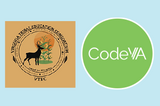
Students will investigate the characteristics of heroes through the book Go Show the World. Students will select one of the heroes identified in the book and research them further, creating a Twine passage that shares what the student learned about the Native figure.This lesson was created through a partnership between CodeVA and the Virginia Tribal Education Consortium (VTEC).

Students examine primary resources, photographs by Dorothea Lange, and a U.S. map to understand the migrant experience during the Great Depression.

Students will plan and possibly build a miniature golf course with a Virginia Studies theme. This activity can be used to review the entire course or for a specific era of Virginia history. Computer programs will be used to plan and enhance the appearance of the course.

This lesson begins an exploration of the concepts of good citizenship in school, in the community, and online. After learning about important historical figures in United States history, students will start to work with different artifacts (books, reference materials, websites, etc.) for research, and they will come to understand that the sources of information they are using were created by others. Authors, illustrators, and web developers are responsible for the creation of many artifacts and sources of information that are used in the classroom and at home. Students will complete activities to be able to 1) distinguish between their ideas and work and those of others and 2) work with a group to research a famous person from history and write a biography that lists the authors, illustrators, and the sources of the information they used.

Adam Seipel, with VaSCL (Virginia School Consortium for Learning), provides this recorded presentation (about 53 minutes long) and slide deck for how to set up and use the tools of Google Classroom.

This presentation focuses on the effective use of Google Docs and Slides. It is about 50 minutes long and the accompanying slide deck is included.
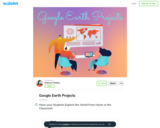
Katie Fielding of Prince William created a Wakelet for teachers on using Google Earth for various types of educational projects.

This presentation focuses on the effective use of Google Forms. It is about 44 minutes long and the accompanying slide deck is included.

Adam Seipel, with VaSCL (Virginia School Consortium for Learning), provides this recorded presentation (about 47 minutes long) and slide deck for how to effectively create and use Google Sites (web pages)
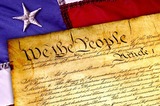
Lesson Plan for a Constitution Scavenger Hunt.Students will engage in discussion about the organization and importance of the Constitution. After, students will be given the Scavenger Hunt and, using a copy of the Constitution, answer all questions going through each Article. The Scavenger Hunt goes over basic information within the Cconstitution. Follow-up lessons could go into deeper, higher level inquiry.Includes Lesson Plan outline as well as Google Doc/PDF attachments of the Scavenger Hunt.
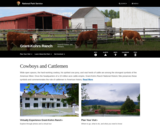
The Grant-Kohrs Ranch commemorates America's frontier cattle era. The ranch, located north of Yellowstone in Deer Lodge, Montana, is among the best surviving examples of an economic strategy based on the western cattle industry of the 1850s-1970s. A German immigrant, Conrad Kohrs, purchased the ranch in 1866 and began by supplying to mining camp butcher shops.
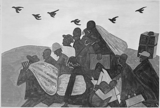
The student will apply social science skills to understand how the nation grew and changed from the end of Reconstruction through the early twentieth century by e) evaluating and explaining the social and cultural impact of industrialization, including rapid urbanization; Great Migration.
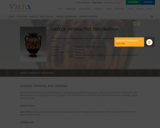
Who were the Ancient Greeks? Explore more about the Ancient Greeks and what they valued as a society in this Interactive Exploration.
This resource consists of two different types of looking, thinking and learning activities. These activities call on students' observation and critical thinking skills as they closely examine selected objects from Ancient Greece. The activities explore the themes of mythology, religion, sport, and trade.
The "Look at This" activities provide close-up views with guiding questions and background information. Students will learn more about what the ancient Greeks valued as a society.
The "Surprise Me" activities offer pop-up hot spots on selected objects to reveal intriguing information about Greek religion, gods, goddesses, trade, sport and mythology. Students will investigate how these objects relate to Greek religion and human need for protection from harm and healing from disease and injury.
![Grid Challenges [Unplugged]](https://img.oercommons.org/160x134/microsite-vadoe-prod/media/courseware/lesson/image/Screen_Shot_2022-07-19_at_5.09.48_PM_dOPPtpJ.png)
Students will practice writing out code in a step-by-step manner and get familiar with debugging.
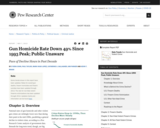
Trends in firearm crime and homicides from 1993 to the present.

As part of our Summer With The Arts series, Women’s Memorial Collections Manager Amy Poe sits down with Gail Belmont and April Goodwin-Gill. Gail and April discuss how their military service played a central role in shaping who they are and how it has influenced their work as artists. Gail and April have found healing and comfort in their art and use it to inspire other veterans, service members, and their communities. Listen to the powerful stories of these veteran artists and learn about the meaning and creative process behind their art. Staying true to our mission, HERstory programming explores the lived experiences of women veterans throughout American history. HERstory is a program where women veterans share their stories in video chats with President Wilson.We are the leading memorial and education center honoring women’s contributions to the service of our nation. As the only historical repository documenting all military women’s service, we educate and inspire through innovative and interactive exhibitions, our world-class collections, and engaging programs and events for all generations. We honor the commitment, contributions and experiences of every woman who serves in, or with, the Armed Forces.